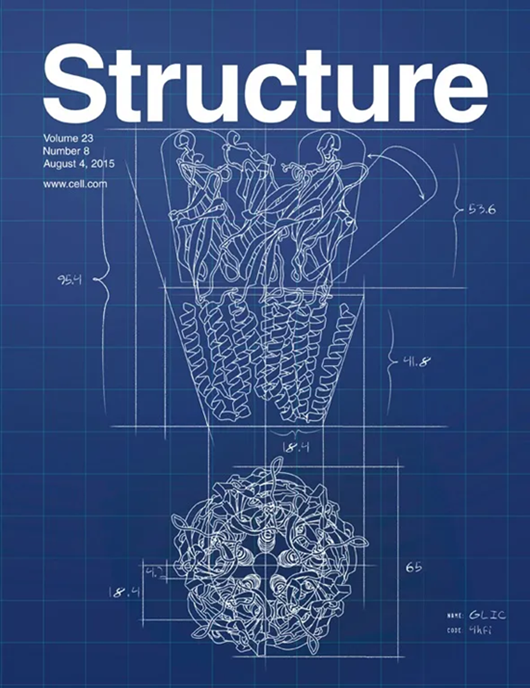Structures of USP7 in active and inactive states bound to DNMT1 revealed by cryo-EM
IF 4.3
2区 生物学
Q2 BIOCHEMISTRY & MOLECULAR BIOLOGY
引用次数: 0
Abstract
The ubiquitin signal generated by UHRF1 is essential for DNA methylation maintenance by recruiting DNA methyltransferase 1 (DNMT1) to hemimethylated DNA through strong binding of its replication foci targeting sequence (RFTS) domain to ubiquitinated histone H3. The ubiquitin-specific protease 7 (USP7) forms a complex with DNMT1 and removes ubiquitin from H3. However, it remains unknown how USP7 deubiquitinates ubiquitinated H3 upon strong binding of the DNMT1 RFTS domain. Here, we show the activation mechanism of USP7 by combining biochemical and structural studies. USP7 is inactive toward ubiquitinated H3 in complex with the RFTS domain. However, when complexed with DNMT1, USP7 efficiently deubiquitinates ubiquitinated H3. Cryogenic electron microscopy (cryo-EM) single particle analysis revealed that USP7 bound to DNMT1 undergoes an open (inactive) and closed (active) conformational transition. Our findings provide mechanistic insights into the activation of USP7 upon binding to DNMT1 and contribute to a better understanding of the deubiquitination process in DNA methylation maintenance.

低温电镜显示USP7与DNMT1结合的活性和非活性结构
UHRF1通过将DNA甲基转移酶1 (DNMT1)的复制焦点靶向序列(RFTS)结构域与泛素化组蛋白H3强结合,将DNA甲基化酶1 (DNMT1)招募到半甲基化的DNA上,从而产生泛素信号,对维持DNA甲基化至关重要。泛素特异性蛋白酶7 (USP7)与DNMT1形成复合物,并从H3中去除泛素。然而,目前尚不清楚USP7如何在DNMT1 RFTS结构域强结合时使H3去泛素化。本研究通过生物化学和结构研究相结合,揭示了USP7的激活机制。USP7对RFTS结构域复合物中的泛素化H3无活性。然而,当与DNMT1络合时,USP7有效地去泛素化H3。低温电子显微镜(cro - em)单粒子分析显示,USP7与DNMT1结合经历了一个开放(非活性)和封闭(活性)的构象转变。我们的研究结果为USP7与DNMT1结合时的激活提供了机制见解,并有助于更好地理解DNA甲基化维持中的去泛素化过程。
本文章由计算机程序翻译,如有差异,请以英文原文为准。
求助全文
约1分钟内获得全文
求助全文
来源期刊

Structure
生物-生化与分子生物学
CiteScore
8.90
自引率
1.80%
发文量
155
审稿时长
3-8 weeks
期刊介绍:
Structure aims to publish papers of exceptional interest in the field of structural biology. The journal strives to be essential reading for structural biologists, as well as biologists and biochemists that are interested in macromolecular structure and function. Structure strongly encourages the submission of manuscripts that present structural and molecular insights into biological function and mechanism. Other reports that address fundamental questions in structural biology, such as structure-based examinations of protein evolution, folding, and/or design, will also be considered. We will consider the application of any method, experimental or computational, at high or low resolution, to conduct structural investigations, as long as the method is appropriate for the biological, functional, and mechanistic question(s) being addressed. Likewise, reports describing single-molecule analysis of biological mechanisms are welcome.
In general, the editors encourage submission of experimental structural studies that are enriched by an analysis of structure-activity relationships and will not consider studies that solely report structural information unless the structure or analysis is of exceptional and broad interest. Studies reporting only homology models, de novo models, or molecular dynamics simulations are also discouraged unless the models are informed by or validated by novel experimental data; rationalization of a large body of existing experimental evidence and making testable predictions based on a model or simulation is often not considered sufficient.
 求助内容:
求助内容: 应助结果提醒方式:
应助结果提醒方式:


